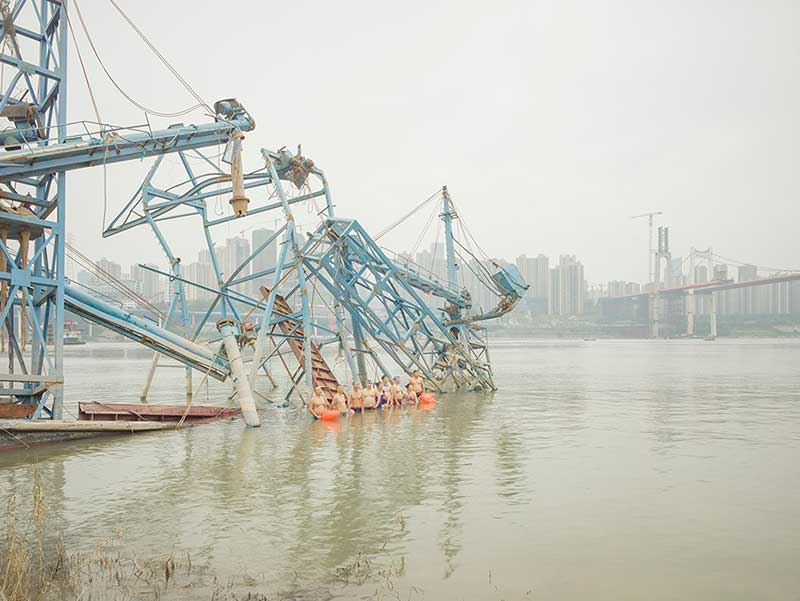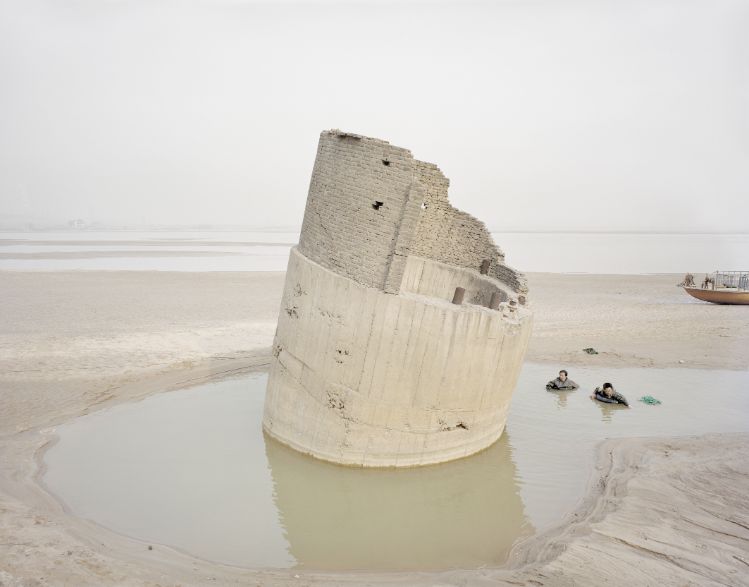The ancient Chinese thought that the Yellow River flowed directly out of the Milky Way. The ‘Sky River’, as they called the starry swathe across the night sky, was considered the lifeblood of the river. Its positioning aligned with the direction of the earthly counterpart. The milky, diaphanous expanses of Zhang Kechun’s photographs of rural China seem to emerge from the river’s celestial source. Expansive, desolate and wild, the photographs reflect on the collision of tradition and the modern state. In 2010, Zhang decided to undertake a journey along the length of the Yellow River. He had read Chengzhi Zhang’s novel River of the North and was inspired by its symbolism of the river and the countryside. Wanting to investigate the significance of the landscape in modern Chinese national identity, Zhang began a journey along the length of the river on a fold-up bicycle, taking his large format Linhof camera with him.
The second longest river in China and the seventh longest in the world, the Huang He, or ‘Yellow River’, finds its source in the Bayan Har Mountains and runs through nine provinces, travelling 3,400 miles, on its journey to its mouth at the Bohai Sea. Considered ‘the cradle of Chinese civilisation’, the river is essential to the success of communities along its course but also causes devastating floods. A flood in 1931 is estimated to have killed between one and four million people, making it the worst natural disaster ever recorded. In recent decades, pollution has left one-third of the river unusable for agriculture or industry and the government is forced to constantly engineer new solutions to manage the demands of a quickly expanding population. Deep wells are drilled and long diversions are built to channel water. Whilst the water quality has improved, the ecosystems that rely on the river are endangered and huge cascade dams have irreversibly changed its ecological structure.

Abandoned Boats, 2017. Zhang Kechun
Known as the mother of the nation in Chinese tradition, the river now struggles to care for those that depend on it. Drought and increasing demand for crop yield has led to a shortage of arable land. These environmental issues facing rural China, coupled with social problems of high taxation, political corruption and three decades of the state’s one-child policy, have left the population struggling to adapt. Scrambling to address water shortages in northern China, the government is instigating the world’s largest hydro-engineering project. Named the South-North Water Diversion, the scheme is intended to take water from high on the Tibetan Plateau to feed the thirsty river and nourish the millions dependent on it. The fifty-year project aims to channel a greater volume of water than the Thames along three 600-mile channels.
This was the river that met Zhang at the start of his journey. He did not, however, embark with the intention of confronting the river’s environmental issues. “I wanted to photograph the river respectfully,” he has said, “it represents the root of the nation.” Despite this, he found that ecological problems became unavoidable: “I started off wanting to photograph my ideal of the river, but I kept running into pollution. I realised that I couldn’t run away from it, and that I didn’t need to run away from it”
(By Flora La Thangue)
